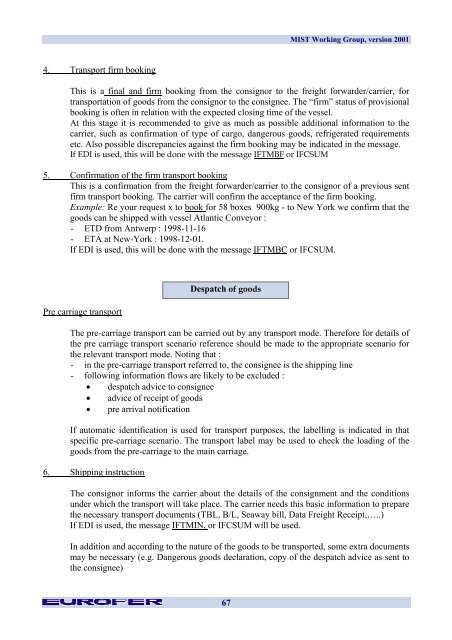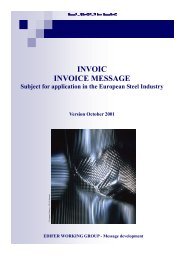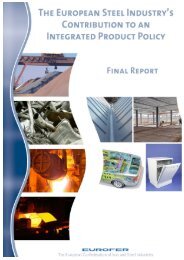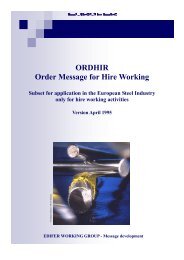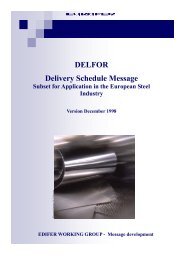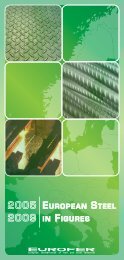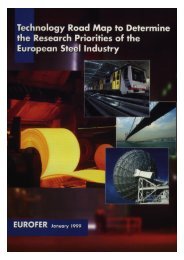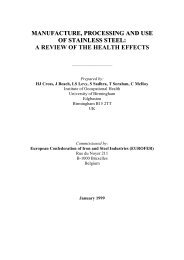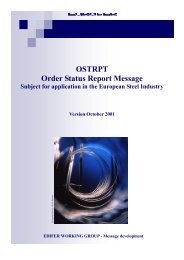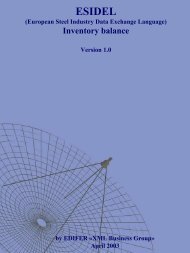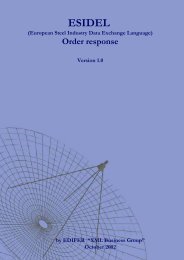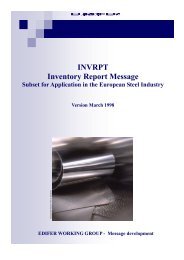Multi Industry Scenarios for Transport - Eurofer
Multi Industry Scenarios for Transport - Eurofer
Multi Industry Scenarios for Transport - Eurofer
Create successful ePaper yourself
Turn your PDF publications into a flip-book with our unique Google optimized e-Paper software.
4. <strong>Transport</strong> firm booking<br />
67<br />
MIST Working Group, version 2001<br />
This is a final and firm booking from the consignor to the freight <strong>for</strong>warder/carrier, <strong>for</strong><br />
transportation of goods from the consignor to the consignee. The “firm” status of provisional<br />
booking is often in relation with the expected closing time of the vessel.<br />
At this stage it is recommended to give as much as possible additional in<strong>for</strong>mation to the<br />
carrier, such as confirmation of type of cargo, dangerous goods, refrigerated requirements<br />
etc. Also possible discrepancies against the firm booking may be indicated in the message.<br />
If EDI is used, this will be done with the message IFTMBF or IFCSUM<br />
5. Confirmation of the firm transport booking<br />
This is a confirmation from the freight <strong>for</strong>warder/carrier to the consignor of a previous sent<br />
firm transport booking. The carrier will confirm the acceptance of the firm booking.<br />
Example: Re your request x to book <strong>for</strong> 58 boxes 900kg - to New York we confirm that the<br />
goods can be shipped with vessel Atlantic Conveyor :<br />
- ETD from Antwerp : 1998-11-16<br />
- ETA at New-York : 1998-12-01.<br />
If EDI is used, this will be done with the message IFTMBC or IFCSUM.<br />
Pre carriage transport<br />
The pre-carriage transport can be carried out by any transport mode. There<strong>for</strong>e <strong>for</strong> details of<br />
the pre carriage transport scenario reference should be made to the appropriate scenario <strong>for</strong><br />
the relevant transport mode. Noting that :<br />
- in the pre-carriage transport referred to, the consignee is the shipping line<br />
- following in<strong>for</strong>mation flows are likely to be excluded :<br />
• despatch advice to consignee<br />
• advice of receipt of goods<br />
• pre arrival notification<br />
If automatic identification is used <strong>for</strong> transport purposes, the labelling is indicated in that<br />
specific pre-carriage scenario. The transport label may be used to check the loading of the<br />
goods from the pre-carriage to the main carriage.<br />
6. Shipping instruction<br />
Despatch of goods<br />
The consignor in<strong>for</strong>ms the carrier about the details of the consignment and the conditions<br />
under which the transport will take place. The carrier needs this basic in<strong>for</strong>mation to prepare<br />
the necessary transport documents (TBL, B/L, Seaway bill, Data Freight Receipt,…..)<br />
If EDI is used, the message IFTMIN, or IFCSUM will be used.<br />
In addition and according to the nature of the goods to be transported, some extra documents<br />
may be necessary (e.g. Dangerous goods declaration, copy of the despatch advice as sent to<br />
the consignee)


